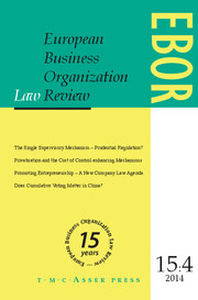Article contents
Do Corporate Law Judges Matter? Some Evidence from Milan
Published online by Cambridge University Press: 17 February 2009
Abstract
If corporate law matters to corporate governance and finance, then in order to assess its quality in any given country, one must look at corporate law off the books, i.e., the characteristics of corporate law as applied by judges and other relevant public officials. This paper provides an assessment of Italian corporate law based on an analysis of a sample of 106 decisions by the Milan Tribunal, Italy's most specialized court in corporate law. The judges' quality is evaluated by looking at: (1) how deferential they are to corporate insiders; (2) how keen they are to understand, and possibly take into account, the real rights and wrongs underlying the case before them; (3) how antiformalistic their legal reasoning is; (4) how concerned they are about the effects of their decisions on the generality of corporate actors.
The analysis casts a negative light on Milanese (and by extension, Italian) corporate law judges. It highlights egregious cases of deference to corporate insiders, especially with regard to parent-subsidiary relationships. Furthermore, very few of the court's opinions have been so drafted as to let the reader understand what the real dispute was and which party had really acted opportunistically. In any case, it appears to be rare for the court to take the substantive reasons for the dispute into any account. Cases are described, in which the court has adduced very formalistic arguments. Finally, there is no sign that the judges care about what signals they send to corporate actors: they appear to be quite unconcerned about whether their decisions provide the right incentives for directors and shareholders.
- Type
- Articles
- Information
- European Business Organization Law Review (EBOR) , Volume 3 , Issue 4 , December 2002 , pp. 765 - 821
- Copyright
- Copyright © T.M.C. Asser Press and the Authors 2002
References
- 37
- Cited by


